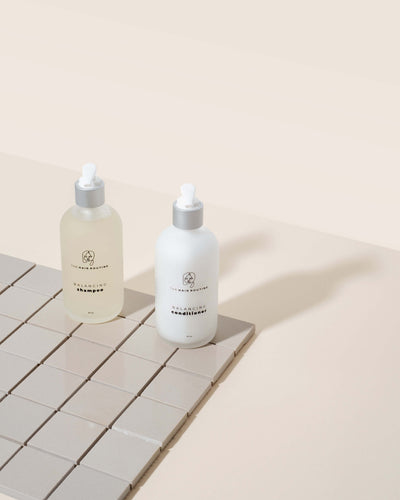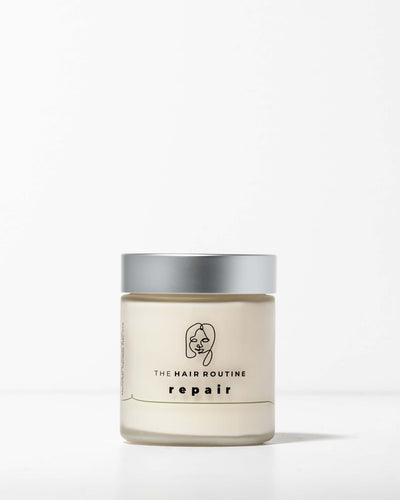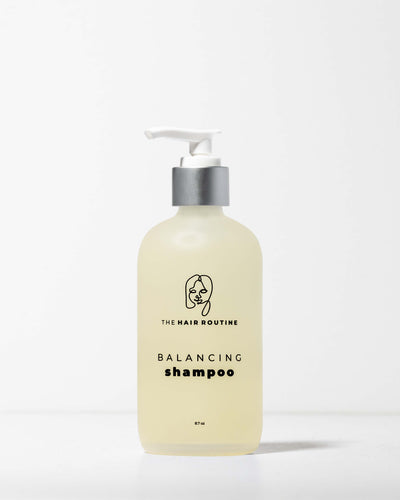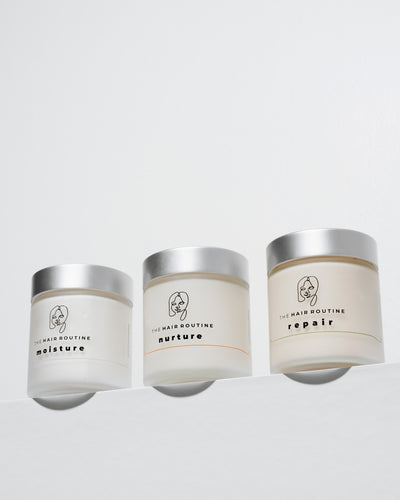Hair Science
Hair Science 101
Heads up! This article contains a lot of important information on the structure of hair, what it’s made of, and how it’s shaped by proteins.
Hair consists of threads that grow in small pockets located below the skin and scalp called follicles. The thickness of the strand varies from 1515 to 110 µm (1 micrometer = one thousandth of a millimeter) depending on the hair type. And in terms of length, hair can grow 1 to 1.5 cm per month. We all have approximately 100,000 productive follicles responsible for replacing fallen hair strands and the average person loses 50 to 100 hair strands daily.
What’s hair made of?
Hair is basically made up of about 65 to 95% protein. Keratin is the most important of the proteins in that count. Proteins are macromolecules formed by a sequence of amino acids. When undergoing chemical procedures like bleaching, amino acids transform to become a different substance, which is why the strands get weaker. The Repair treatment helps rebuild broken bonds and strengthen new ones by replenishing the hair with a wide range of vegan proteins.
Another important component of hair strands is water. Hair has liquid elements in its structure such as water and pigments. Just like with skin, it’s extremely important to replenish the strands with a Moisture treatment that has ingredients that lock that moisture inside the strands.
In addition to these, other elements such as iron, zinc, iodine, copper and aluminum are part of the hair.
Last but not least, hair needs oil. Sebum is the natural wax produced by your scalp in the necessary quantities to keep it healthy, the strands lubricated and shiny. Its pH level flattens the cuticles - which is what we want - to have those silky locks. Try this Nurture hair mask that has more than 10 different oils in its formula.
The Best Natural Oil is Produced by Your Body
How does hair look on a microscopic level?
Hair is formed by three parts: the cuticle, the cortex, and the medulla.  The cuticle is the part that surrounds and protects the cortex, which comprises most of the hair’s mass, it’s composed of proteins and melanin - the pigment. At a microscopic level, the cuticle looks like tiny fish scales that open and close depending on the reaction they have to different pH levels. The center of a hair strand is the medulla, a hollow soft shaft formed by keratin fibers and air spaces that give the hair its thickness.
The cuticle is the part that surrounds and protects the cortex, which comprises most of the hair’s mass, it’s composed of proteins and melanin - the pigment. At a microscopic level, the cuticle looks like tiny fish scales that open and close depending on the reaction they have to different pH levels. The center of a hair strand is the medulla, a hollow soft shaft formed by keratin fibers and air spaces that give the hair its thickness.
How does hair get its shape?
When the proteins bond to each other, they give structure and shape to the hair in addition to strength. When hair is wet, its shape easily changes, but on the other hand it becomes 3 times weaker than normal.
Different hair types are the result of varied conformations of protein chains and different types of amino acids. The union of atoms and the different combinations between these unions are responsible for the shape of the hair, which is widely determined by DNA. When we perform a smoothing or relaxing process, these connections “break”.
How to keep hair at its healthiest state?
Just like your body, hair requires a special, “balanced diet” to be at its healthiest and strongest. All hair types need a combination of water, oils, and protein according to a specific, rotating schedule. To learn what the ideal combination of these elements is for your hair, complete this online consultation and receive your personalized hair routine immediately. Stay on top of your hair game, and nourish your hair with your ideal hair care routine. Start today.
References:
http://www.campusvirtual.ufsj.edu.br/






